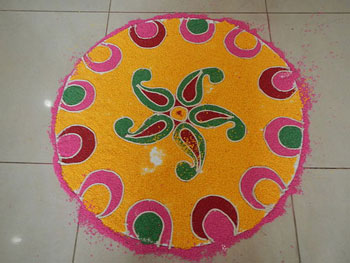4 From embodied mathematics to representations on paper
In Activities 2 and 3 you gave the students concrete experiences of making mathematical construction on a large scale. This offers different learning experiences from doing tasks in the class, or using a textbook. But at some stage your students’ mathematical learning needs to be transposed to a pen and paper approach, and to answering examination questions. Bruner (1966), an eminent educator, described these different worlds as ‘enactive–iconic–symbolic’.
The next activity aims to make that transition and take the learning from doing mathematics outside (Bruner’s ‘enactive’ phase), to making drawings or pictures that represent enactive learning (Bruner’s ‘iconic’ phase), and finally to using mathematical symbolic notation and making sense of such notation (Bruner’s ‘symbolic’ phase). Such mathematical symbolic notation is found in textbooks and examination papers.
Activity 4: From embodied mathematics to exam questions
Part 1
Tell your students to think back to Activity 3, where they tried to find the centre of a circle in the playground by putting down a ball in the centre and seeing whether they could do the same on paper. You will now ask them to redraw the circle they made in the playground with a smaller one that fits into their exercise books. They could draw the circle with the help of a bangle, a pair of compasses or anything round. If time allows, they could turn their circle into a rangoli (Figure 2).

Ask your students to answer the following questions:
- How can you get its precise and undisputed centre?
- Outside school, where and when do you think you would need to find the centre of a circle? Use your imagination!
Part 2
Tell your students to think back to Activity 2, where they made larger versions of triangles. How can they turn that into a classroom activity that they can do in their exercise books?
Part 3
Tell your students the following:
- Take your textbooks and, if available, examination papers.
- Find the chapters and questions that you think relate to the mathematics you learned from Activities 2 and 3, and Parts 1 and 2 of this activity.
- In what way are those questions the same or different?
- Do you get stuck on the same issues?
- How do you get unstuck on your own?
- Pretend you are a textbook writer or an author of examination questions. Can you come up with three new questions on this topic that could be used in the textbook or examination – one easy, one medium and one hard? (Remember you have to be able to answer these questions correctly yourself!)
Case Study 4: Mrs Mehta’s reflections on Activity 4
The change in my students after doing these activities was rather profound. Although they do not find these tasks easy, and could not do them quickly, they seemed to have so much more confidence in their ability to do mathematics. They seemed to be more in control of their own learning powers.
They happily engaged with the first part of the task, coming up with the most unlikely stories as to why they would need to construct the centre of a circle. Nearly all of the stories involved the rationale for having to draw on paper as one of scaling to make a model, suggesting that they could see beyond the mathematics in their exercise books.
For Part 2 of the activity, I asked the students to work in pairs, because talking through it might help to get unstuck and get more ideas.
We started off looking at the textbook chapters and discussing what actually was in these chapters. Again, they worked further on this in pairs. For the construction of new questions, this is one of the questions they came up with:
- A proportion for two triangles, ABC and PQR, is as follows:
- Find the proportion of the perimeters of the two.
- Use the information you found out to find the possible sides of the bigger triangle.
Another question was:
- Draw a triangle that is of another, original triangle.
- Draw a triangle that is of that other, original triangle.
- Discuss how you would draw a triangle that is of the original triangle.
Pause for thought
|
3 Embodying mathematics
